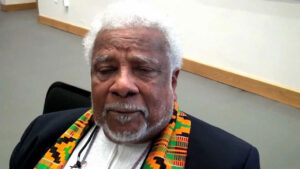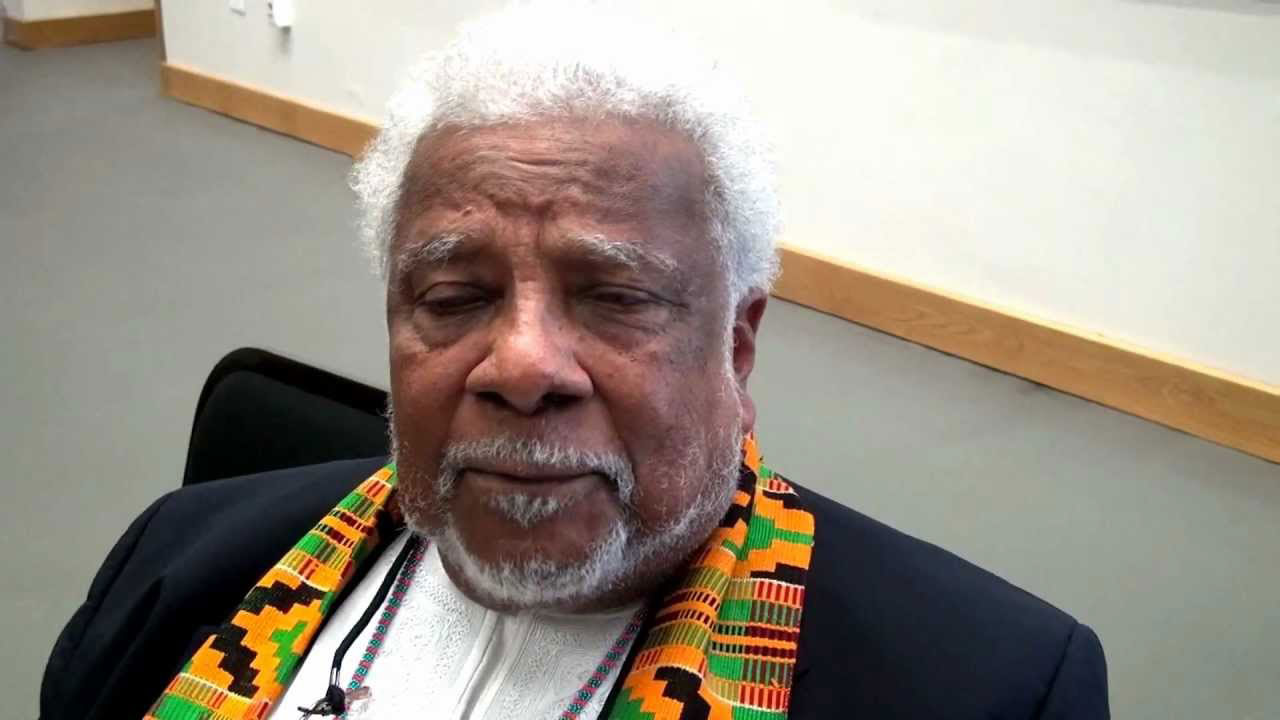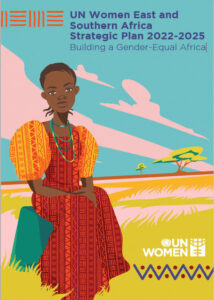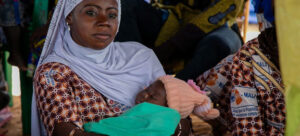

“The Kenyan political thinker who was unafraid to confront contentious issues.” “The African political scientist who sparked controversy.” This was how The Guardian and The Times of London respectively described Ali Mazrui shortly after his death in October 2014. That Mazrui thrived on controversy is widely known.
The image of Mazrui portrayed by Malawian scholar Paul Zeleza in his intervention at the Ali Mazrui 10th anniversary virtual webinar last month is, however, quite different. Just as Nelson Mandela and Martin Luther King Jr. have often been shorn of their radicalism in much of contemporary analyses, Zeleza’s Mazrui seems to be ideologically compatible with an eclectic motley crew of diverse scholars, revealing a cardboard cutout of the Kenyan scholar.
Precisely because Zeleza is a widely respected academic and administrator whose work could have a great impact, particularly on younger scholars, we wish to challenge the portrayal of the Kenyan academic in his 18-page essay “The Enduring Legacy of Ali Mazrui: Commemorating an Intellectual Griot.”
Zeleza purports to discuss comparatively Mazrui’s scholarship and that of 28 other thinkers: his predecessors, contemporaries, and successors. The task could not be nobler, but Zeleza unfortunately largely fails to achieve his stated goals of placing the Kenyan intellectual within the context of his ancestral and contemporary influences.
We might classify Zeleza’s sins into two parts: sins of commission and sins of omission. Sins of commission are largely misinterpretations or distortions of what Mazrui has written, while sins of omission are fundamental facts that are overlooked.
Sins of commission
Zeleza correctly notes that: “Mazrui’s most well-known concept of the Triple Heritage (was) articulated in his book and television series The Africans: A Triple Heritage (1986).” Mazrui, however, never critiqued the imposition of Western liberalism on African societies resulting in a scepticism of Western-style democracy, as Zeleza claims in seeking to align the Kenyan’s views to those of Nigerian scholar Claude Ake.
Mazrui’s position was more nuanced. While he was strongly anti-colonialist, he was only mildly anti-capitalist. He genuinely believed that capitalism was the mother of both imperialism (of which he disapproved) and liberal democracy (which he admired in theory, but felt was hypocritically practiced by Western nations particularly in their support of foreign autocrats and maltreatment of black minorities at home).
Zeleza suggests that Mazrui’s advocacy of Pan-Africanism was consistent with that of individuals like America’s W.E.B. Du Bois and Ghana’s Kwame Nkrumah. Zeleza could have further clarified the different shades of meaning in which the term is understood, as well as how Mazrui’s own thinking of the concept evolved, by drawing on the Kenyan’s rich typology of Pan-Africanism elaborated in detail in his seminal 1977 book, Africa’s International Relations: The Diplomacy of Dependency and Change.
Zeleza links Nkrumah’s ideas on Pan-Africanism and neo-colonialism to Mazrui’s, but fails to interrogate the Kenyan scholar’s most contentious debate which was centred around Nkrumah. Mazrui’s most influential article “Nkrumah: The Leninist Czar?” published in 1966 shortly after Nkrumah’s fall from power, depicted the Ghanaian leader as a “Leninist Czar”: a royalist revolutionary who had helped pioneer one-party rule in Africa and ruled in a monarchical fashion that lost the organisational effectiveness of a Leninist party structure. Mazrui was widely vilified by leftists and Pan-Africanists for what many felt, at the time, was a treacherous pro-imperialist critique of an African liberation icon.
Zeleza also highlights Wole Soyinka sharing Mazrui’s beliefs on the importance of African intellectual and cultural autonomy, without noting the fundamental differences between the two scholars evident in their ferocious debate of 1991/1992 in which Soyinka accused Mazrui of an Islamophilic slant in his 1986 nine-part documentary The Africans, berating the Kenyan scholar for underplaying the damage of the Arab slave trade on Africa, and for trivialising and misrepresenting African indigenous cultures.
Among Mazrui’s intellectual successors named by Zeleza are such eccentric choices as Ghana’s George Ayitteh, African-American Henry Louis Gates Jr. and Cameroon’s Achille Mbembe. Ayitteh is a conservative scholar who disproportionately focuses attention on African tyrants and domestic deficiencies and thus blames Africa for its own failures. Mazrui, in stark contrast, consistently blamed historical and contemporary external forces for most of Africa’s problems, without ignoring domestic autocracy.
In 2000, Mazrui scathingly critiqued Gates’s six-part documentary Wonders of the African World for: portraying ancient Egyptians as racist; ignoring Swahili experts; overplaying Muslim atrocities in Zanzibar; and under-playing Jewish commercial involvement in the Transatlantic slave trade. Cameroon’s Achille Mbembe was described by Malawian scholar, Thandika Mkandawire, as representing “an obscurantist anti-‘victimology’ discourse”, and has more recently acted as an academic ambassador for French president Emmanuel Macron’s neo-colonial efforts in Africa: a far cry from Mazrui’s dyed-in-the-wool Pan-Africanism.
Sins of omission
In terms of Mazrui’s contemporary influences, Zeleza lists writers like Nigeria’s Chinua Achebe, Kenya’s Ngugi wa Thiong’o, and Ghana’s Ayi Kwei Armah, but fails to note Nigeria’s greatest poet, Christopher Okigbo, on whom Mazrui wrote his only novel: The Trial of Christoher Okigbo, in 1971.
Mazrui’s focus on literature also tended to be a global and not just a continental one that sought to use authors like Shakespeare, Milton, and Kipling to illuminate the African condition.
Among Mazrui’s closest intellectual collaborators within his peers were Nigeria’s Ade Ajayi and Jamaica’s Dudley Thompson with whom he campaigned relentlessly on the issue of reparations to Global Africa for the European-led Transatlantic slave trade and colonialism. All three Pan-African intellectuals also served on the Organisation of African Unity’s Group of Eminent Persons established in 1992.
Zeleza mentions none of this. Furthermore, some of the political figures he identifies like Amilcar Cabral were not as central to Mazrui’s scholarship as Tanzania’s Julius Nyerere, Uganda’s Milton Obote and Idi Amin, Egypt’s Gamal Abdel Nasser, Libya’s Muammar Qaddafi, and later, South Africa’s Nelson Mandela and America’s Barack Obama, none of whom are mentioned. Zeleza has thus omitted individuals who would have to form an integral part of any serious discussion of Mazrui’s scholarship. Zeleza’s list appears arbitrary, and even he himself concedes that it is based on “impressionistic selectivity” (apparently because it is no easy task to capture in a short essay the essence of Mazrui’s intellectual output of 58 books and 679 academic articles). Many of these scholars and statesmen, we think, are perhaps those that Zeleza himself admires. They are not the ones that were major influences on, and disciples of, Mazrui.
Zeleza then outlines 10 of Mazrui’s most important ideas, but fails to mention perhaps his most influential: Pax Africana. This was a concept that the Kenyan told us he was most proud to have coined. The idea is developed in Mazrui’s very first 1967 book Towards A Pax Africana: A Study of Ideology and Ambition in which he argued for Africa to craft its own self-pacification mechanisms in order to avoid pernicious interventions by external actors. This study remains a foundational text of Africa’s International Relations and Conflict Resolution, but somehow does not make it into Zeleza’s top ten.
Some of the comprehensive work in the rich treasure of Mazruiana that would also have been helpful for Zeleza to have mentioned is Mazrui’s 2014 African Thought in Comparative Perspective, and in reference to his discussion on Mazrui’s contributions to feminist thought, the late Kenyan scholar’s 2014 The Politics of Gender and the Culture of Sexuality.
But what should not be overlooked is who else is missing from Zeleza’s account: the Ali Mazrui we know who loved to argue, generate controversy, and stimulate ideas. Where is the Mazrui who made a name for himself by challenging conventional wisdom?
Where is the Mazrui who once said “my life itself is one long debate”? The Mazrui we knew was also different from Zeleza’s Mazrui in another sense. The Kenyan intellectual was a storyteller, the master of paradox, the master comparativist, the master of metaphor, the master verbal gymnast, a master jargon-buster, a master inventor of words, and a master classifier. This “Multiple Mazrui” is mostly missing from Zeleza’s interesting essay.
In short, Zeleza’s interpretation of the “enduring legacy” of Mazrui vastly overplays the connections between Mazrui’s scholarship and that of his predecessors, contemporaries, and successors. The Kenyan had noted in 1991: “My own worldview does not fit into any particular …school. That is why I am attacked from (all directions.)”
In the Hereafter which he dubbed “After Africa”, Mazrui himself would be unlikely to recognise Zeleza’s reinvention and caricature of Africa’s most eloquent griot and the Black Atlantic’s Master Essayist.
Professor Adebajo is a Senior Research Fellow at the University of Pretoria’s Centre for the Advancement of Scholarship; and Dr Adem is a Research Fellow at JICA Ogata Research Institute for Peace and Development in Tokyo, Japan. Dr Adem is also Ali Mazrui’s intellectual biographer.













